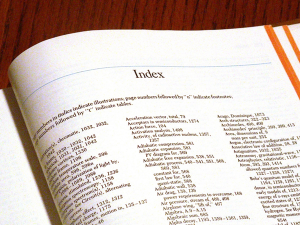So, about a week ago, I had the honor of being your host for T-SQL Tuesday for the month of September. And an amazing 22 bloggers responded to that invitation. I want to thank each of the bloggers for the time they put into their contribution. We really had some high quality contributions this month.
And another thanks to Adam Machanic for letting me host this month.
Here are the participating blog posts:
First to go live with his post was Brad Schulz, awesome as ever. He talks about Fill Factor percents and Unique Indexes. He shows his knack for writing in a way that after having read his post, you’ll never forget what he explained.
What Struck Me: Before he gets into the topic at hand, he throws his support behind team indexes (and takes a few shots at team indices) a must read by itself, I pointed my family at the post and heard out-loud laughs.
Rob Farley explains how there is no such thing as a table. Essentially he explains how a clustered index is the table. (Good on ya Rob).
What Struck Me: Spoofing the Matrix:
“Don’t try to look up information in the table. That’s impossible. Only try to realize the truth.”
“What’s that?”
“There is no table.”
Pinal Dave tackles the question “What will be the status of the B-Tree structure when index is disabled?”
What Struck Me: He investigates and explains the answer thoroughly. He also includes a personal touch with his post when he talks about a mentor Vinod Kumar.
Noel (team indexes) explains how an unused index (an index with few reads & writes) can still be useful.
What Struck Me: I like Noel’s writing style. His articles make me feel like he’s sitting right beside me explaining something at my computer. Maybe it’s his first-person narrative or the fact that he throws in his own experiences. Whichever it is it works.
Any time I read from someone who has tackled replication in a successful way, I’m immediately impressed. Nicholas explains how to extend a replication solution so that the subscriber has indexes that the publisher doesn’t.
What Struck Me: A must read for any one who uses replication (or who is considering replication)
For the first time, Richard Douglas (Team Indices) contributes a post for T-Sql Tuesday. He explains how indexes are not all rainbows and unicorns all the time. He shines light on problem indices that don’t do anyone any good: Unused Indices.
What Struck Me: With a working vocabulary that includes words like “amended” and “gracious”, Richard gives “credence” to the thought of switching to Team Indices.
Erin Stellato explains the steps she takes in her search for a seek (while simultaneously reminding us of 80’s movies).
What Struck Me: What I like about Erin’s take is that she includes in her explanation an Oracle solution. Keeping other platforms in mind keeps everyone honest.
A post by yours truly with fancy Visio pictures. I try to explain what physically happens when a clustered index grows.
What Struck Me: A frisbee.
Provides an embellished script that has been making the blog rounds to report on redundant indexes. Good job Bob!
What Struck Me: A gold painted potty chair! I can’t describe it properly, you just have to see for yourself.

Jen pulls her post from the archives to give an introduction to indexes.
What Struck Me: She explains how INCLUDED columns in an index are only included at the leaf levels! This is something I didn’t know until now. It reminds me of something mentioned by Brad Schulz’s post where Unique Indexes can also do without columns in the index nodes.
Gail writes an authoritative post on indexing strategy. Hers is one of the few contribution that addresses the question “Which index is best?”
What Struck Me: I like her conclusion about the so-called “strategy” of having single-column indexes on each column of the table. And her post is a must read for anyone who isn’t clear on this point.
The SQL Rockstar explains indexes using a Big Mac analogy it’s an analogy I guarantee no-one has considered before (making this post legendary).
What Struck Me: A Microsoft Connect Item on the Big Mac Index. Wow.
Another member of team indexes, Diane covered important index topics in a clear way that it can almost be used as a checklist (for creating indexes or querying them).
What Struck Me: Diane is a very competent writer and although I’ve got a bunch of other posts to read for this round up I found myself going through more of her articles. And subscribing to her blog’s feed. Us database developers have to stick together.
In AJ’s own words, he talks “about what indexes are, why we can benefit from their use and some of the costs associated with using indexes.”
What Struck Me: Along with the standard clustered vs. non-clustered, AJ gives a brief intro to some of the lesser known kinds of indexes: Fulltext, Spatial, XML etc…
Just like the cheesy 80’s sitcom clip show, Jason gives a list of his series on Index analysis. It’s a good sign though, only the best 80’s sitcoms ever got clip shows (Joanie Loves Chachi notwithstanding).
What Struck Me: In fact in my own “cheesy clip show” post last year I ran out of clips and ended up linking to Jason’s site.
Dave queries some DMVs to help you analyze how effective your fill factor settings are.
What Struck Me: Okay, I have to call this one out. If you’re a dba, and you read only one index post this month make it mine, but if you have time to read two read Dave Levy’s. His fill factor script belongs in every DBA’s toolkit alongside queries that analyze things like missing index or fragmentation levels.
Jeremy explains the process he follows to identify and remove unused indexes.
What Struck Me: Jeremy is probably the most underexposed blogger on this list. There are a ton of MVP participants this month include honest-to-God book authors! Jeremy holds his own quite easily alongside them.
Andy tackles index partitioning in this post. Specifically, he explains two methods of moving from non-partitioned indexes to partitioned indexes.
What Struck Me: I like that this is not a hypothetical situation. Andy and his colleagues are facing this problem as we speak (or as I write). And they are testing to determine which method is faster. The results are not in yet making his post a bit of a cliff-hanger.
Robert (aka SQL Soldier) explains how XML indexes are structured.
What Struck Me: Oh the things you can do using the dedicated administrator connection!!
A great analogy for indexes is the phone book. Aaron Nelson runs with it.
What Struck Me: The post and comments stretch that metaphor about as far as it can go.
Ending this month’s T-SQL Tuesday, Jason (team indexes) refurbishes an old script of his to report on BLOB index columns.
What Struck Me: He mentions something that I’m surprised never got covered by anyone else this month: Blob’s make lousy indexes.
Encore!
(Update 9/20/2010) One late addition (sorry I missed it, there was no comment at the invite post).
In Steve’s own words, he reminds us that “Indexing is important, but you can overdo it.”
What Struck Me: He wrote about a third-party db he came across which include the most over-indexed table I’ve ever seen in my life.














